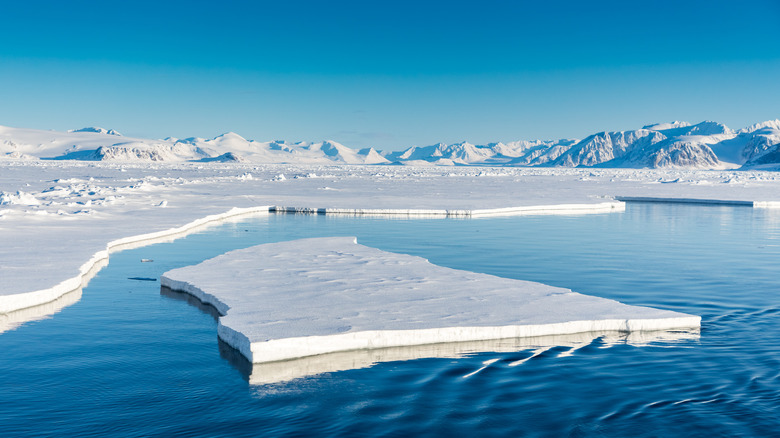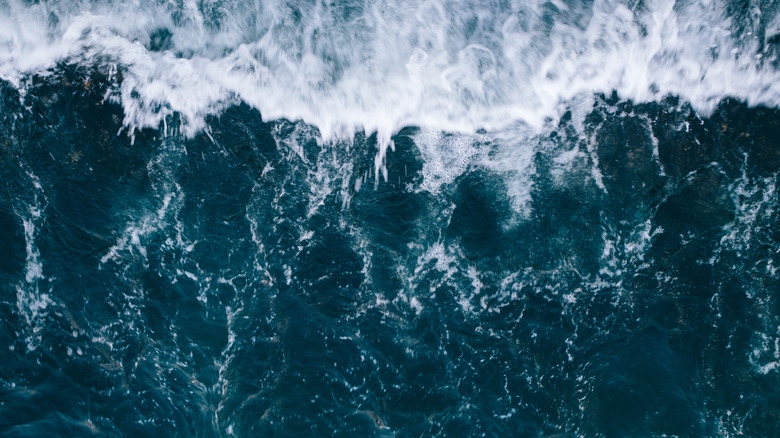Here's Why The Oceans Don't Fully Freeze Over
Have you ever wondered why oceans don't freeze over like lakes and rivers? According to the National Ocean Service, only 15% of the Earth's ocean turns to ice in the coldest times of the year. The majority of the ocean stays in its liquid form even in frigid weather conditions. It's common knowledge that water freezes at 32 degrees Fahrenheit, but water in the ocean has a freezing point of 28 degrees Fahrenheit because of its salinity. It's certainly possible for some parts of the ocean to reach this temperature, and surely, the entire ocean will freeze with temperatures lower than 28 degrees. But other factors prevent that from happening.
One of the variables that must be considered is the massive volume of water in the ocean — not to mention its extensive depth. In order for liquid to freeze, it must release heat through the surface, which is why a shallow puddle of water with a large surface area freezes faster than a deeper puddle (via West Texas A&M University). The ocean is both vast and deep, and as a result, it does not freeze over completely.
Ocean currents and internal heating
Because of the Earth's rotation and the moon's gravitational pull, the ocean constantly has currents. This perpetual movement means that the ocean water is never stationary, therefore its water molecules don't freeze into ice crystals. In addition to this, ocean water from the warmer regions near the equator is pushed by currents to the colder regions, so the water doesn't completely freeze, per West Texas A&M University.
Another factor that prevents the ocean from completely freezing is the Earth's internal heat source in the form of decaying elements in the Earth's mantle. The heat penetrates to the Earth's crust, and the crust is thinner under the ocean than it is on land, so Earth's internal heat dissipates to the ocean. Because of this, the deepest depths of the ocean have warmer temperatures than the water near the surface, thus preventing it from freezing completely — even in the coldest temperatures.

